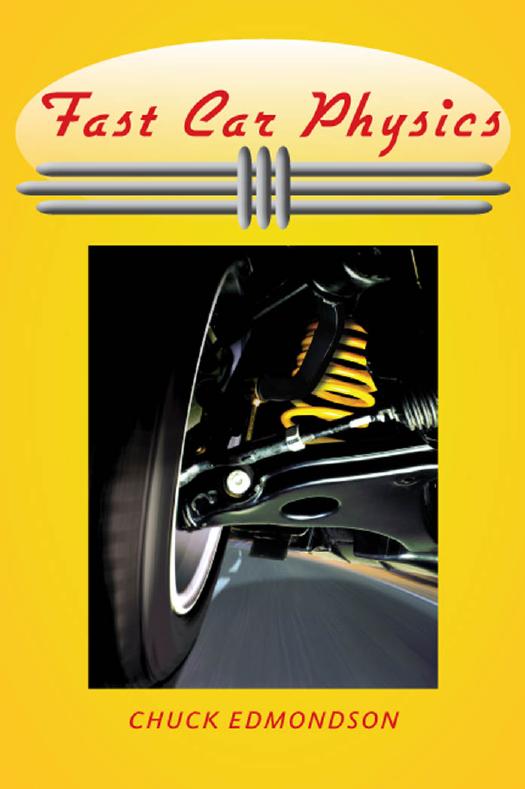Fast Car Physics by Chuck Edmondson

Author:Chuck Edmondson
Language: eng
Format: epub, pdf
Publisher: Johns Hopkins University Press
Published: 2011-08-14T16:00:00+00:00
4.14 ALIGNING TORQUE
How does the driver know when the slip angle is too great? To some degree, he or she can feel the yaw rate (rate of turning left or right) with their inner ear or through forces in their seat. A lot of drivers and instructors talk about having a well-calibrated seat! However, these changes are subtle. A better feedback mechanism is a well-made steering system using something called a self-aligning torque. The idea is to have the lateral force at the contact patch create a torque, which drives the steering wheel back toward the neutral position where the car heads straight.
Figure 4.26a shows the side profile of a tire with a vertical steering axis. The wheel, hub, and steering knuckle all pivot about the kingpin. The axis intersects a point on the ground next to the center of the contact patch. The lateral force generated in the contact patch does not generate a torque about the steering axis in this orientation. In figure 4.26b the steering kingpin axis is tilted with the top backward. This angle of the kingpin with respect to the vertical is called the caster angle, and in this orientation it is positive. If we project the steering axis downward until it intersects the ground, we define the “Dave point” (named by noted magazine journalist Dave Coleman). The horizontal distance from the Dave point to the center of the contact patch is called the mechanical trail. The lateral force in the contact patch generates a torque about the steering axis and is a function of the mechanical trail and the lateral force. Because of distortion in the tire under load, the lateral force on average does not act exactly at the center of the contact patch. This shift in the point of action of the lateral force is called the pneumatic trail. The total aligning torque from the caster is the sum of the mechanical and pneumatic trails times the lateral force times the cosine of the caster angle. We can apply the small-angle approximation, where cos(θ) ≈ 1. The caster angle is typically only a few degrees, making our approximation accurate to within a few tenths of a percent. The resulting aligning torque rotates the tire to align with the instantaneous velocity vector. The wheels and steering return automatically to the neutral position.
Download
This site does not store any files on its server. We only index and link to content provided by other sites. Please contact the content providers to delete copyright contents if any and email us, we'll remove relevant links or contents immediately.
The Complete Stick Figure Physics Tutorials by Allen Sarah(7267)
Secrets of Antigravity Propulsion: Tesla, UFOs, and Classified Aerospace Technology by Ph.D. Paul A. Laviolette(5239)
Thing Explainer by Randall Munroe(3850)
The River of Consciousness by Oliver Sacks(3499)
The Order of Time by Carlo Rovelli(3098)
How To by Randall Munroe(2972)
A Brief History of Time by Stephen Hawking(2913)
I Live in the Future & Here's How It Works by Nick Bilton(2901)
The Great Unknown by Marcus du Sautoy(2616)
What If?: Serious Scientific Answers to Absurd Hypothetical Questions by Randall Munroe(2591)
Midnight in Chernobyl by Adam Higginbotham(2434)
Blockchain: Ultimate Step By Step Guide To Understanding Blockchain Technology, Bitcoin Creation, and the future of Money (Novice to Expert) by Keizer Söze(2411)
Networks: An Introduction by Newman Mark(2306)
The Meaning of it All by Richard Feynman(2269)
Easy Electronics by Charles Platt(2253)
The Tao of Physics by Fritjof Capra(2205)
Midnight in Chernobyl: The Untold Story of the World's Greatest Nuclear Disaster by Adam Higginbotham(2129)
When by Daniel H Pink(2058)
Introducing Relativity by Bruce Bassett(2050)
